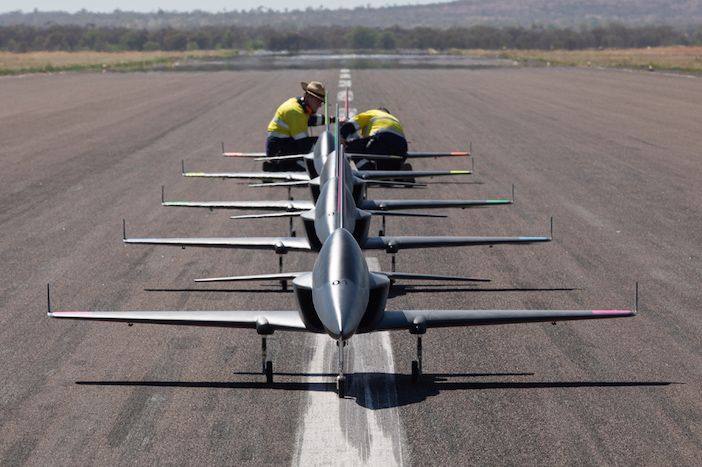Boeing engineers in Australia have completed flight tests with five high performance surrogate jets operating autonomously in a team at a flight test range in Cloncurry, Queensland.
The tests of the five 3.4m (11ft ) aircraft demonstrated the autonomous on-board command and control and data sharing capabilities of the autonomous technology that is being developed for Boeing’s Airpower Teaming System and future Boeing autonomous platforms.
One such teaming platform is Boeing’s Loyal Wingman prototype, which is also being developed at Cloncurry. Boeing powered on the first prototype’s engine for the first time in September and plans to conduct its first flight before the end of the year.
A series of flight tests were conducted over 10 days, with aircraft incrementally added until the five operated together. During testing, the aircraft reached speeds of 270km/h (167mph).
Emily Hughes, director of Boeing’s Phantom Works International said, “The tests demonstrated our success in applying artificial intelligence algorithms to teach the aircraft’s brain to understand what is required of it. The data link capabilities enabled the aircraft to communicate with the other platforms so that they could collaborate to achieve a mission.”
“With the size, number and speed of aircraft used in the test, this is a very significant step for Boeing and industry in the progress of autonomous mission systems technology.”
The test flights were the final milestone a research project with the Queensland Government in Australia which has involved several local companies including RFDesigns, Amber Technology Ltd, Premier Box, McDermott Aviation and Five Rings Aerospace.
Several manned-unmanned teaming (MUM-T) concepts are being developed for military applications, including the Grom unmanned combat aerial vehicle in Russia. MUM-T concepts involve a drone supporting and extending a piloted aircraft during missions.





